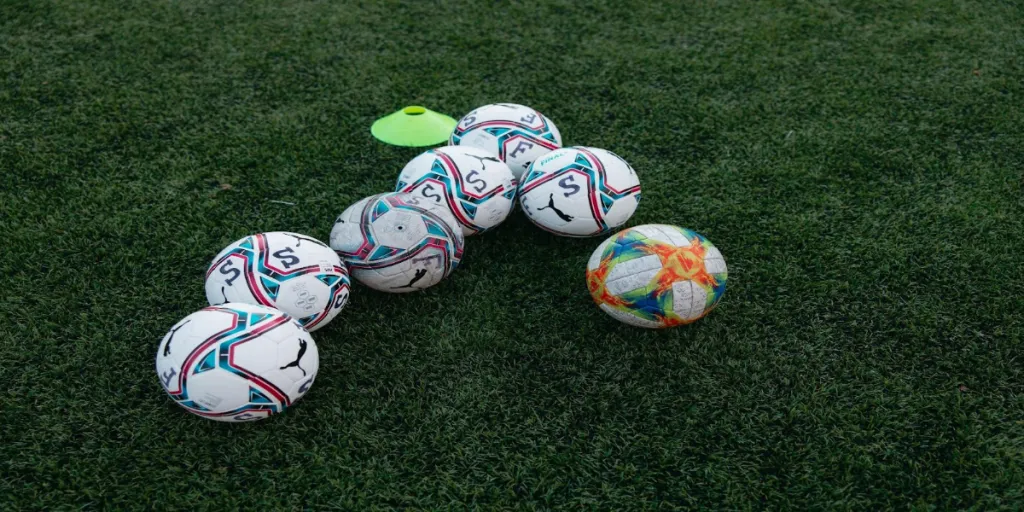The footballing world has always thrived on evolution, be it in techniques, training methods, or gear. In 2023, the advancements in football technology have reached an unprecedented peak, and which football is used now plays an even more crucial role in defining the essence of the game, influencing not just a player’s performance but also determining the effectiveness of training sessions. For sports equipment sellers, understanding these factors has become more critical than ever.
This guide aims to equip you with the insights you need to make informed stocking decisions, ensuring that the kit you buy caters to the demands of the modern player.
Table of Contents
Football market share and size
Types of footballs
Important factors to consider when buying a football
Conclusion
Football market share and size
The global football market has experienced notable growth in the last few years, with its value reaching a remarkable US $3.2 billion in 2022. Forecasts by the IMARC Group project this momentum to continue, anticipating the market’s value to grow at a continuous annual growth rate (CAGR) of 4% and reach an all-time high of US $4 Billion by 2028.
This optimistic projection is primarily driven by increasing participation in professional football tournaments and leagues by footballers of all ages across the globe. In addition, there’s a growing consciousness about the benefits of physical activity, with football being a popular choice of sport for many people.
Furthermore, innovative advancements in football manufacturing, emphasizing sustainable materials and integration of smart technologies, add a contemporary edge to traditional play. Such trends, combined with the growing popularity of club football and major tournaments, present an appealing market for sellers to explore.
Types of footballs
Match balls
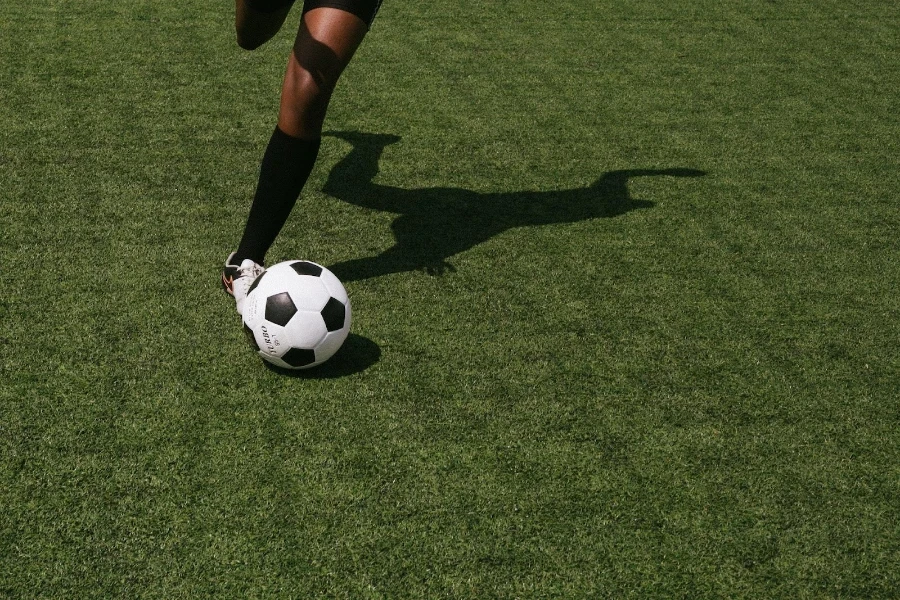
In the high-stakes world of professional football, match balls are at the pinnacle. According to Google Ads, these balls and their related keywords, such as size 4 and 5 match balls have an average monthly search volume of 50-10,000 in the US alone. This consistent demand reflects their integral role in official league matches and tournaments.
With an unmatched blend of durability and aerodynamics, they’re the best for professional football, meaning that it’s important that sellers aiming to cater to an elite audience stock these balls. This audience comprises major football clubs, associations, and professional players.
Training balls
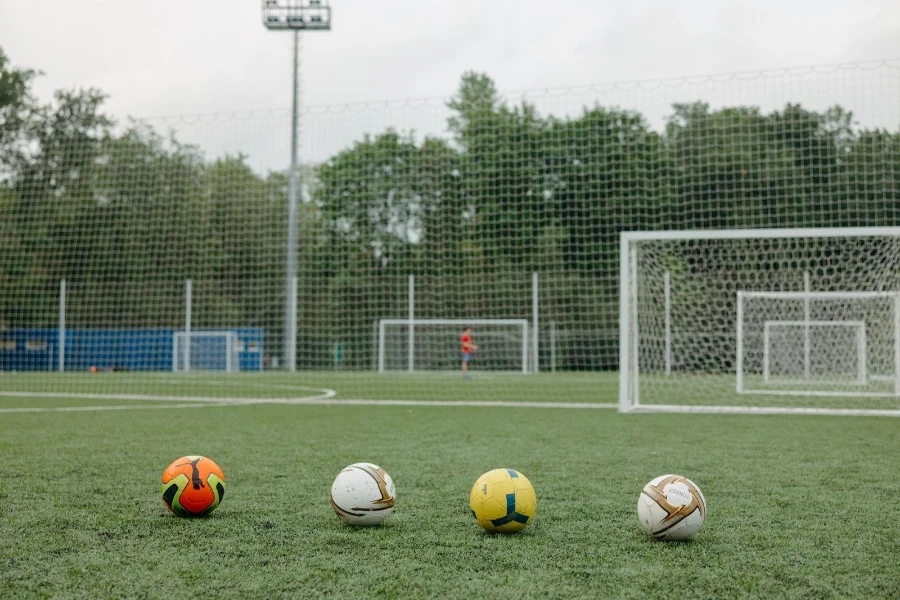
Football mastery begins with relentless practice, and training balls are the perfect choice to do so. Training balls are crafted to endure the daily grind of on-pitch drills and offer a balance between durability and performance, ensuring players can refine their skills without compromising ball quality.
According to Google Ads, “soccer training balls” and related searches showed a consistent growth of 23.8% from March to September 2023 in the US. This demonstrates their increasing popularity across a broad demographic, including schools, local clubs, and individuals.
Futsal balls
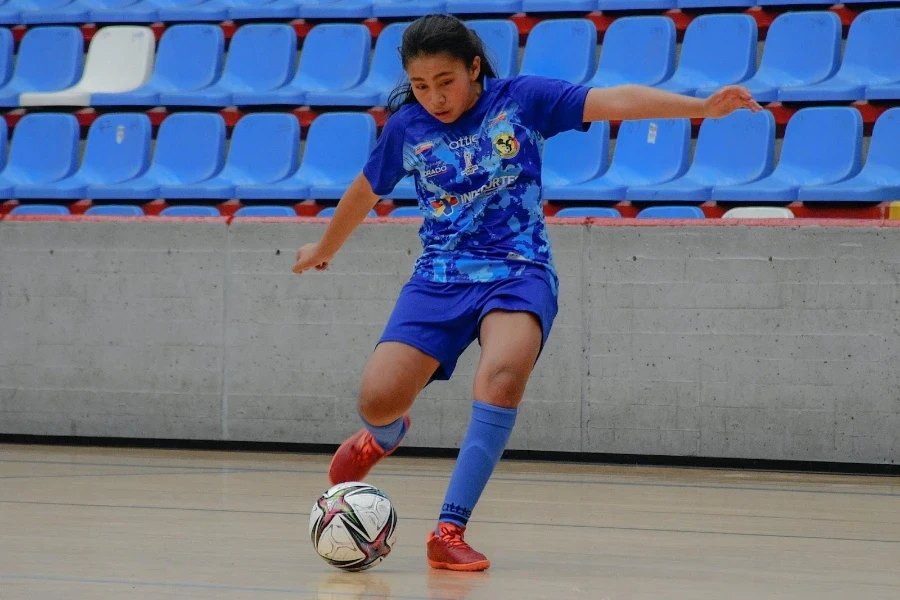
Futsal balls are the ideal option for indoor football. These footballs provide a significant niche, especially in the US market, where in the last six months, they have an impressive 1,000-plus average monthly searches, according to Google Ads.
Designed for indoor pitches, futsal balls are slightly smaller and have a reduced bounce, providing an optimal gameplay experience. Sellers can exploit this niche by targeting indoor sports facilities, schools with indoor arenas, and the growing number of futsal users in the US and other parts of the globe.
Beach soccer balls
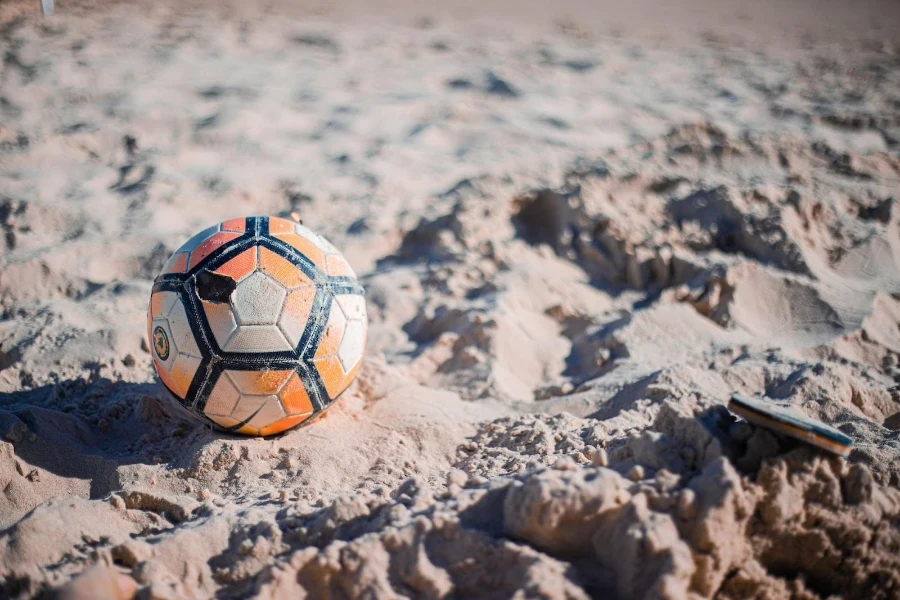
Sun, sand, and a game of soccer are a combination many can’t resist, and beach soccer balls are crafted specifically for this setting. According to Google Ads data, these popular beach balls and related keywords register a monthly search volume of 100-1k in the US alone, showing an 85.7% increase in the last six months.
Lighter, softer, and designed for sandy surfaces, they are perfect for a casual kick-around at the beach. Sellers targeting beachgoers, coastal resorts, and beach football tournaments will want to stock them, especially during peak vacation seasons.
Indoor balls

Indoor soccer’s popularity is rising, especially in the US, and indoor balls are designed specifically for this niche. In the last six months, these soccer balls and related keywords have registered a monthly search volume of 100-1k in the US, according to Google Ads.
These balls are tailored for hard surfaces and the fast-paced dynamics of indoor soccer. Their design ensures a consistent bounce and reduced flight, making them indispensable for indoor arenas. Sellers focusing on indoor soccer facilities, clubs, and players in the US are likely to find a steady market given the sport’s growing traction.
Mini/skills balls
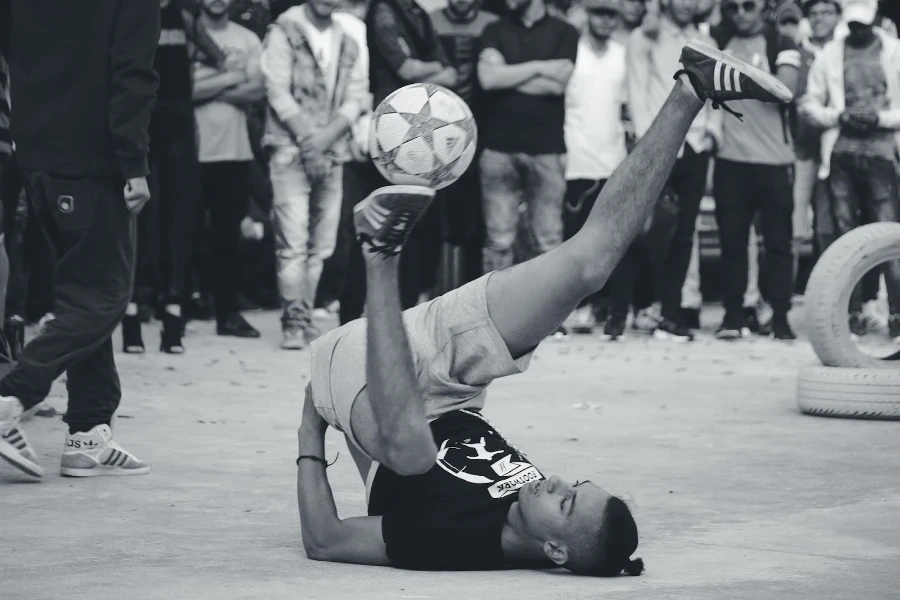
Skill refinement is crucial for any aspiring footballer, and mini/skills balls are the ideal choice for this. With a monthly search volume of 1k-10k in the US for the last six months, according to Google Ads, these footballs are seeing a fast growth in popularity.
Designed for skills training, ball control exercises, and juggling, mini balls play a pivotal role in a player’s growth. For sellers, stocking these balls provides an avenue to target upcoming and professional players, coaches, and training institutes.
Important factors to consider when buying a football
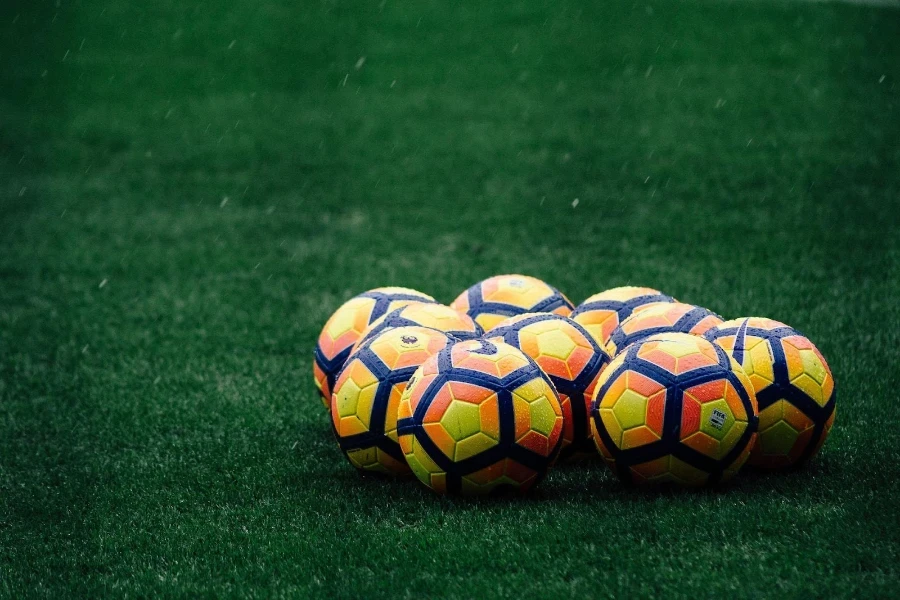
For sellers looking to drive sales and establish a loyal customer base, it is crucial that they understand the factors that consumers look for when buying footballs. Here’s a closer look at some of the factors every seller needs to know:
Material and durability
A good football is determined by its material and durability. High-quality materials, like polyurethane or leather, make all the difference. Sellers should prioritize footballs that can withstand rigorous use over time, as they guarantee the user a long-lasting product.
Here’s how different materials compare:
| Material | Description | Durability |
| Leather | Traditional material; offers a soft feel and natural touch | Moderate: Susceptible to water absorption and wear. Can degrade faster in wet conditions. |
| Polyurethane (PU) | Often used in professional-level balls; provides a soft feel and is water-resistant | High: Resistant to wear and tear, maintains its shape for a longer period |
| Polyvinyl carbonate (PVC) | Common in low-cost and children’s balls; harder and less responsive than PU | Moderate to high: Quite durable but not as responsive or pleasant to play with |
| Rubber | Typically used for street soccer balls due to its resistance to rough surfaces | Moderate: Durable for rough surfaces but can be less responsive and heavier |
| Synthetic leather | Designed to mimic the feel and characteristics of real leather without the drawbacks | High: Combines the soft touch of leather with the durability of synthetic materials |
Aerodynamics
A football’s flight characteristics are largely determined by its aerodynamic properties. Factors like panel configuration, stitching, and overall design play pivotal roles in influencing a ball’s flight and trajectory. Sellers who understand such features can provide invaluable guidance to customers, especially those keen on professional play.
Weight and size
One size doesn’t fit all in the world of football. Different age groups and match standards demand specific ball sizes and weights. Sellers should look into stocking a diverse range, from size 3 balls for young children to the standard size 5 for adults and professional play.
Price point and brand reputation
Value for money is a critical concern for many buyers. While not everyone seeks top-tier brands, a brand’s reputation often indicates its quality. Sellers should curate a mix of footballs across various price points, ensuring each offers value.
Environmental and ethical considerations
The modern buyer is increasingly conscious of environmental and ethical considerations. Brands that champion sustainable production methods or materials are gaining traction. In 2023, offering footballs that resonate with eco-conscious buyers can help you to carve out a loyal customer base in today’s environmentally aware marketplace.
Conclusion
As a seller, picking the best footballs isn’t just about finding something for the customer to kick around. It’s about understanding each customer’s individual needs and preferences. This means understanding the different types of football and recognizing the factors consumers consider when buying, from the materials used to individual brand reputation.
With such knowledge, you can offer a wide range of high-spec footballs. Remember, every player, no matter whether they’re a beginner or a pro, has unique needs, and catering to that diversity can set you apart. As soccer continues to be a beloved sport worldwide, the importance of selecting the best footballs cannot be underrated.If you’re in the market for footballs, you can find a huge range of equipment just like those mentioned above on Alibaba.com.
